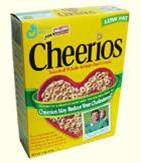Mathwire Dr. Seuss Activities
| Many schools celebrate the birthday of Theodor Geisel, better known as Dr. Seuss. Consider adding mathematical activities to these celebrations. One fish, two fish, red fish, blue fish is an especially good introduction to combinations. Use the Mathwire open-ended problems written to accompany this book. The problems may be used with older grades who enjoy hearing their childhood book read aloud. Primary students will enjoy completing Seussical Patterns, using the classic red and white striped Seuss hat. See more Mathwire Dr. Seuss activities. |






